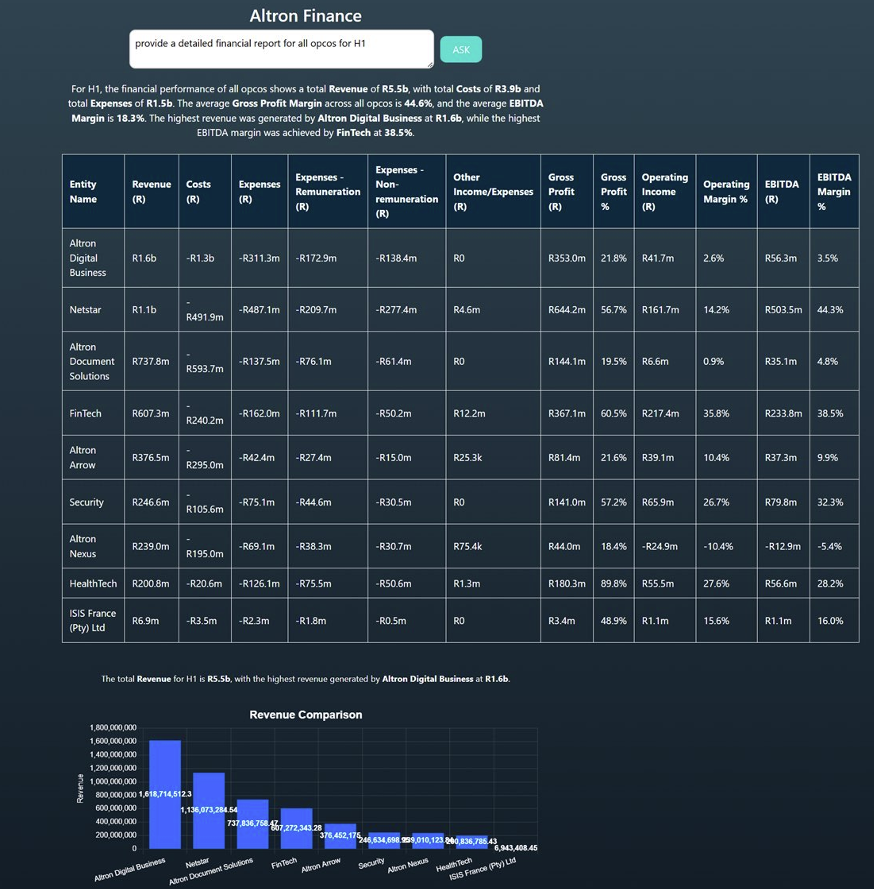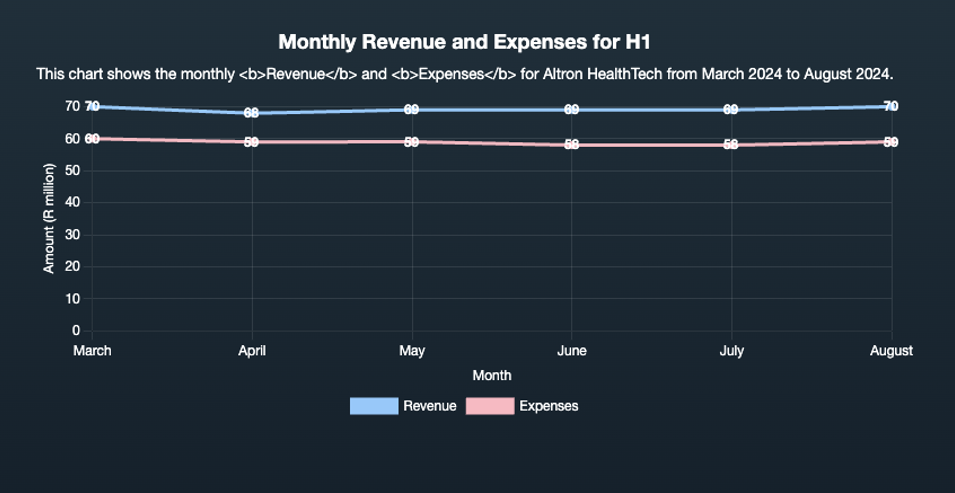Background
A leading IT consortium listed on the JSE is exploring ways to rapidly understand and query their group financial data across 8 separate OpCo’s. With the aim to enhance financial reporting, and customer data analysis through an AI-powered Natural Language Query (NLQ) assistant.
To address this, the consortium is considering a Digital Transformation initiative that integrates an AI-driven virtual assistant, enabling management to interact with structured and unstructured data through natural language queries.
Potential Objectives
- Allow management to query financial data via natural language prompts.
- Generate graphs and tables previously done through Power BI, only much quicker.
- Provide real-time view of loaded financial data.
- Retrieve analysis of budgeted vs actual.
- Extend future capabilities to include customer data, share of total revenue, growth, and key stakeholder data.
Proposed Solution Architecture
The Natural Language Query Assistant, developed by SideKick Lab, would be structured across four core layers:
-
User Interface Layer
- Query Input: Users can type questions in English via web-based platforms.
- Formatted Responses: Responses are customized at a group and/or OpCo level, ensuring financial clarity and relevance.
-
Administration Layer
- User Authentication: Role-based access control linked to enterprise authentication.
- Query Management: Monitors query usage to optimize performance and prevent misuse.
-
Logic Layer
- Responsible AI Checks: Ensuring ethical and unbiased responses.
- Query Analysis: Determining relevant data sources (structured databases, APIs, or LLMs).
- SQL & API Query Processing: Translating natural language requests into structured database or API queries.
- Retrieval-Augmented Generation (RAG): Integrating unstructured content like manuals and documents.
- LLM Integration: Utilizing AI models to generate responses when required.
- Response Coordination: Combining data sources for an accurate and context-aware answer.
-
Data Layer
- Structured Data: financial databases, and customer data.
- Unstructured Content: Financial reports, customer organograms, and other documents.
- Third-Party Content: External data sources relevant to financial history, and JSE performance.
Screenshots
Below are examples of the AI platform in action, showcasing how financial data is integrated and analyzed in real-time for strategic decision-making.


Expected Benefits
- Enhanced financial reporting and analysis by simplifying graph generation and customer reporting.
- Improved financial efficiency with instant access to critical data.
- Optimized financial management with real-time insights and trends analysis.
- Scalability to support multiple channels without modifying the core assistant.
Conclusion
This is an example of the innovative AI solutions SideKick Lab can develop to transform how businesses interact with complex and fragmented financial reporting across various OpCo’s. By leveraging Natural Language AI, companies can drive financial efficiency, enhance management efficiency, and future-proof their financial operations.
